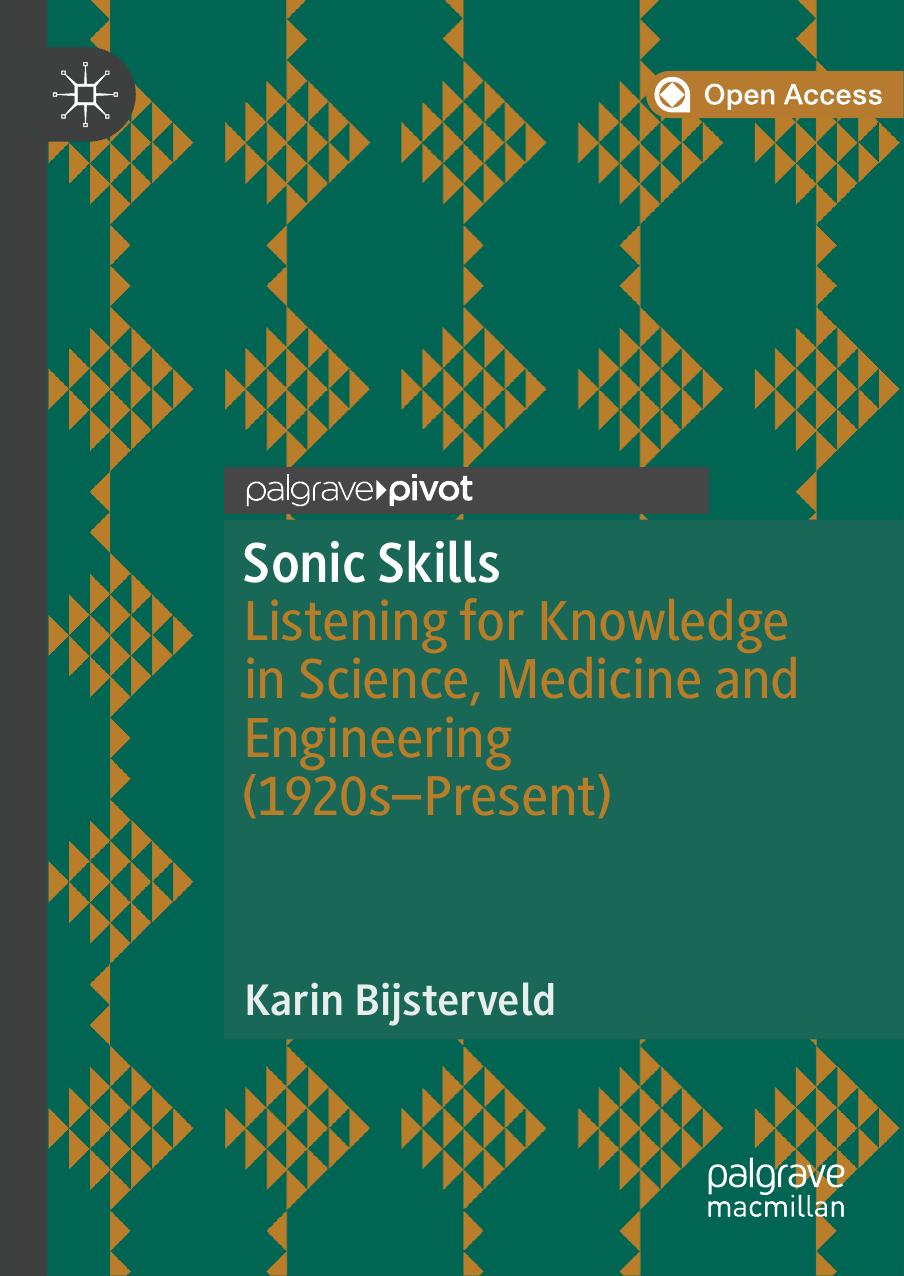Sonic Skills by Karin Bijsterveld

Author:Karin Bijsterveld
Language: eng
Format: epub, pdf
ISBN: 9781137598295
Publisher: Palgrave Macmillan UK
Conclusions
This chapter has argued that we need both the notion of listening modes and the notion of sonic skills to understand how sound has been used as a path to knowledge making in science, medicine, and engineering. Its analysis began with a typology of listening practices. Certainly, our project is not the first to present such a typology; typologies of listening abound in scholarly work on sound. Building on such literature and on our own case studies of Western scientists, doctors , mechanics, and engineers, we have distinguished between six modes of listening , operating on two dimensions. Monitory, diagnostic , and exploratory listening refer to different purposes of listening in the sciences; analytic, synthetic, and interactive listening express particular ways of listening . We have also stressed, however, that scientists, engineers , and doctors are not required only to engage in any given one of these modes, but additionally—or especially—to shift between modes. Tools and instruments , whether multichannel stethoscopes, tape recorders , all sonification software, enable particular forms of listening and mode-shifting.
We also pointed out that sonic skills are not limited to listening skills . Although our notion of sonic skills encompasses the skills that experts need in order to employ the various listening modes, it also encompasses the ability to design, record, store, mimic, and retrieve sound. All these sonic skills are associated with the handling of specific instruments —virtuosity in sonic skills means not just the ability to use one’s ears, but also the ability to handle various tools and instruments . These practical tools often also play a symbolic role in the knowledge practices of scientists, engineers , and doctors : they can symbolically enhance the epistemological status of listening.
Sonic skills have repercussions on the knowledge claims that can be made in science, engineering, and medicine. The decision to employ a particular technique in the recording of sound, for instance, is not an innocent one: it can affect the substance of knowledge claims that are made and the conceptions of the objects under study. In order to understand the knowledge practices of scientists, engineers , and physicians , then, it pays to consider the listening modes and sonic skills involved in their production. Doing so deepens our insights in the role of sound and listening in the sciences, and might also inspire research into the contribution of other non-visual senses in knowledge making.
As for sound and listening, there is more to discover than we have done so far. We are interested, for instance, in the reopening of debates on the status of sensory information every time new, and epistemologically still unstable, tools are introduced that make the inaudible audible or translate data from one sensory mode into another, as was the case for the spectrograph. We still have much to learn about the conditions under which sonic skills are accepted or contested in knowledge-making practices. These are the topics of the following chapters. But without an understanding of modes of listening , and of their relationship with tools and the skills to handle them, we cannot begin to tackle those issues.
Download
This site does not store any files on its server. We only index and link to content provided by other sites. Please contact the content providers to delete copyright contents if any and email us, we'll remove relevant links or contents immediately.
Learning SQL by Alan Beaulieu(6209)
Weapons of Math Destruction by Cathy O'Neil(6142)
Digital Minimalism by Cal Newport;(5662)
iGen by Jean M. Twenge(5366)
Sapiens by Yuval Noah Harari(5293)
The Age of Surveillance Capitalism by Shoshana Zuboff(4209)
Elon Musk by Ashlee Vance(4027)
Thing Explainer by Randall Munroe(3876)
Apollo 8 by Jeffrey Kluger(3635)
Future Crimes by Marc Goodman(3529)
The Science Book (Big Ideas Simply Explained) by DK(3233)
Who Can You Trust? by Rachel Botsman(3086)
Infinite Energy Technologies by Finley Eversole(2938)
I Live in the Future & Here's How It Works by Nick Bilton(2934)
Steve Jobs by Walter Isaacson(2830)
The Innovators: How a Group of Hackers, Geniuses, and Geeks Created the Digital Revolution by Walter Isaacson(2827)
Dawn of the New Everything by Jaron Lanier(2737)
Chernobyl by Serhii Plokhy(2496)
Ben Franklin's Almanac by Candace Fleming(2466)
